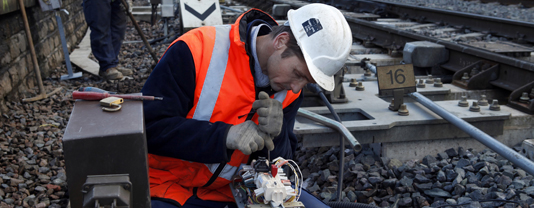The Italian railway industry has developed over the years by producing, in many cases, peaks of excellence at a world level. The sector is represented by Assifer (Associazione dell’Industria Ferroviaria – Italian Railway Industry Association), a member of the ANIE Federation (which represents electrotechnical and electronics companies operating in Italy and is in turn a Confindustria member) and part of UNIFE (Union des Industries Ferroviaires Européennes).
Assifer brings together over 98 companies operating in Italy in the railway transport technologies and public mass transport fields, with a total of around 13,000 employees and a total turnover of approximately 3.2 bn Euro for 2012.
Our readers are well aware that one of Railway Engineering’s main objectives is to globally disseminate the valuable specialist technical know-how that comprises the excellence of Italy. In recent years we’ve worked to create a fairly complete scenario of the most important railway engineering research being carried out in Italy, in universities and also in companies in the sector.
On this basis, and to give you an even more complete picture, we interviewed Maurizio Manfellotto, the new chairman of Assifer as well as Managing Director of Ansaldo Breda, to discuss the changes in the Italian railway industry, highlighting the main trends in its development for the next few years and the excellent results achieved.
On the international scene, as anticipated, we’re continuing our journey through India, concentrating on urban transport. In Gurgaon, a city of around 200 thousand inhabitants located on the immediate south-western outskirts of New Delhi, we interviewed Sanjiv Rai, Managing Director and Chief Executive Officer of IL&FS Rail, the company given the job of designing, building and managing the first wholly private metropolitan railway in the country. He told us about the most important aspects of the project: a metropolitan system that is about to become fully operational in the next few days, serving one of the most highly developed areas in the city – Cyber City – and functionally linked with Delhi Metro.
We concluded the second part of this long “Focus On” by meeting the Managing Director of Delhi Metro Rail Corporation, Mangu Singh, who led us to discover an efficient metropolitan network that has been active since 2002 and is of fundamental importance for the social and economic life of a city that has 13 million inhabitants and a population density of over 7500 people per sq. km.
Finally, we open the series of “Specials” devoted to urban transport with a long interview with Mr. Gianni Scarfone, engineer and Managing Director of TEB (Tramvie Elettriche Bergamasche – Bergamo Electric Tramways) and one of the major experts in local public transport in Italy, to talk about the great success achieved by the Bergamo-Albino Tramway; this has been open for four years now and is an example of how, even in a middle-sized city like Bergamo, rail transport can play a key role in urban mobility.
To conclude, there is, as always, a great amount of fascinating content. So without wasting any more precious time, I’ll leave you to read this interesting new issue and look forward to seeing you again in September.
